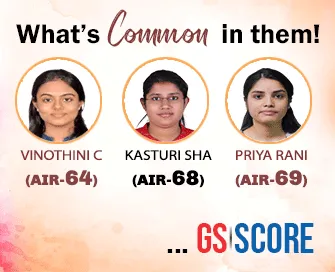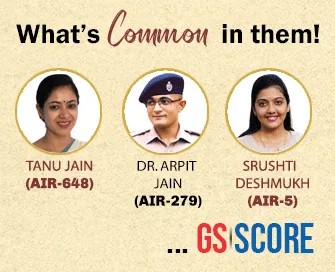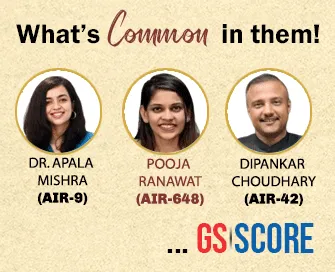

8th July 2025 (9 Topics)
Mains Issues
Context:
Prime Minister Narendra Modi met the President of Bolivia, Luis Arce Catacora, on the sidelines of the 17th BRICS Summit in Rio de Janeiro, where both leaders reviewed the bilateral relationship, with a focus on critical minerals, digital infrastructure, and development cooperation.
India–Bolivia Bilateral Cooperation:
- Bolivia is a key partner for India in Latin America, especially in the critical minerals sector, such as lithium, vital for India’s green energy and battery ecosystem.
- India and Bolivia are expanding cooperation in areas such as:
- Trade and commerce
- Digital Public Infrastructure (DPI) including UPI
- Health and pharmaceuticals, including traditional medicine
- SMEs, training, and capacity-building
Critical Minerals Focus:
- Bolivia is part of the "Lithium Triangle" (with Chile and Argentina), holding one of the world's largest reserves of lithium, essential for EV batteries and energy storage systems.
- India aims to reduce dependence on China for rare earths and critical minerals by building ties with resource-rich nations like Bolivia.
Development Cooperation Instruments:
- India supports Bolivia via:
- Quick Impact Projects (QIPs) for local development.
- ITEC (Indian Technical and Economic Cooperation) program for training and scholarships.
Solidarity and Diplomacy:
-
- PM Modi expressed solidarity over Bolivia’s March–April 2025 floods, reinforcing India’s humanitarian diplomacy.
- PM also congratulated Bolivia on the bicentennial (200 years) of independence (6 August 2025).
- Bolivia's joining the International Solar Alliance (ISA) reflects convergence on climate action and solar energy transition.
Global South Engagement:
-
- The meeting strengthens India’s engagement with the Global South, in line with its vision for inclusive global governance.


Mains Issues
Context:
Fresh clashes between Chin ethnic armed groups—CNDF and CDF-H—in Myanmar’s Chin State have led to the displacement of around 4,000 Chin refugees, who crossed into Mizoram’s Champhai district through the Zokhawthar–Tiau River border.
India–Myanmar Border and FMR
Historical and Ethnic Context of the Border Issue
- The India–Myanmar border stretches 1,643 km, passing through four Indian states: Arunachal Pradesh, Nagaland, Manipur, and Mizoram.
- Ethnic fragmentation began with:
- Myanmar's separation from British India in 1935.
- India's independence in 1947.
- This disrupted the traditional boundaries of ethnic communities like the Nagas, Kukis, and Chins—leading to identity, security, and sovereignty challenges.
- The Naga Self-Administered Zone (NSAZ) in Myanmar and Eastern Nagaland in India are inhabited by closely-knit ethnic groups who now find themselves split by an artificial boundary.
Free Movement Regime (FMR)
- FMR allows border residents to travel up to 16 km across the Indo–Myanmar border without a visa.
- It was formalized to:
- Preserve traditional ties, kinship, and economic interdependence.
- Enable students, traders, and families to move freely.
- Reduce alienation caused by the hardening of borders.
Shortcomings of the Free Movement Regime
- Smuggling: Contraband and narcotics are moved under the guise of head-loads, which bypass inspection under FMR.
- Insurgent Movement:
- Militant groups such as NSCN-K, ULFA, and NDFB exploit the porous border to establish safe havens in Myanmar.
- These groups conduct strikes in India and retreat into Myanmar.
- External Interference:
- China has been suspected of offering logistical and intelligence support to these insurgent groups.
- Geographic Constraints:
- The border is heavily forested, mountainous, and difficult to patrol, complicating surveillance and response.
Border Fencing and its Impacts
- The construction of fences to strengthen border security has raised strong opposition from local communities.
- Affected ethnic groups: Konyaks, Khiamniungans, and Yimchungers.
- Concerns:
- Loss of access to ancestral lands, cultivated fields, and forest produce.
- Disruption of cultural and familial links across borders.
- Risk of fueling anti-establishment sentiments and destabilizing peace in the region.
Policy Recommendations: Border Management Strategy
Confidence-Building Measures (CBMs)
- Conduct tripartite talks involving:
- Government of India (GoI)
- Myanmar authorities
- Local ethnic stakeholders (via state government)
Inclusive Development Initiatives
- Launch cross-border socio-economic programmes:
- Improve livelihood options to reduce dependence on illegal trade.
- Focus on connectivity, education, health, and micro-enterprises.
Balanced Security Approach
- Implement:
- Selective fencing in critical hotspots (not blanket fencing).
- Use of technology (drones, thermal imaging, satellite surveillance).
- Regulated movement through monitored crossing points.
Policy Assurance
- Assure locals that fencing decisions will not be unilateral.
- Consultation with affected communities must precede any construction or enforcement measure.
Way Forward
- India must balance its national security interests with ethnic sensitivities and humanitarian considerations.
- A multi-pronged approach involving:
- Smart border management
- Ethno-cultural respect
- Bilateral cooperation with Myanmar
- Integrated development of the border region
- Strengthening people-to-people ties, rather than erecting hard barriers, may enhance long-term peace and security.
|
Tyao (Tiau/Tio) River
Geographical and Hydrological Features
Geopolitical Significance
|
|
PYQ: "The north-eastern region of India has been facing insurgency for decades. Examine the role of external state and non-state actors in creating this insurgency. Suggest suitable measures to be undertaken to contain this." (2016) |


Mains Issues
Context:
Delhi is getting its fifth waste-to-energy (WTE) plant, located in Bawana, with a capacity to process 3,000 tonnes of waste daily.
Waste Segregation at Source and Waste-to-Energy in India
Solid Waste Management in India
- Definition: Solid Waste includes garbage, refuse, sludge, and other discarded materials from residential, industrial, and institutional sources.
- Key Statute: Governed by the Solid Waste Management (SWM) Rules, 2016, notified under the Environment (Protection) Act, 1986.
- Solid Waste Generation:
- India: 1,70,338 tonnes/day (CPCB 2021–22)
- Waste Treated: ~91,512 tonnes/day (~54%)
- Delhi: Generates ~11,000 MT/day; processes ~8,073 MT/day
- Improvement: Waste processing increased from 18% in FY 2014–15 to 78% in FY 2024
Waste Segregation at Source
- SWM Rules, 2016 Categories:
- Biodegradable: Organic, compostable (food scraps, paper)
- Non-Biodegradable: Recyclables and inert materials (plastics, glass, metals)
- Domestic Hazardous: Diapers, cleaning agents, napkins, e-waste, batteries
Significance:
- Prevents cross-contamination of recyclable/organic waste
- Facilitates resource recovery through composting and recycling
- Reduces burden on landfills and improves urban sanitation
- Helps in tracking hazardous waste and reduces public health risk
Waste-to-Energy (WtE) Technologies
- Provisions under SWM Rules, 2016:
- Waste ?1500 kcal/kg calorific value must be diverted to energy recovery.
- Mandatory RDF Use: Industries within 100 km of RDF plants to use 5% RDF as fuel.
Major WtE Technologies:
|
Method |
Description |
|
Incineration |
Combustion of MSW to generate heat ? steam ? electricity |
|
Gasification |
Converts organic waste to syngas using high temperatures and low oxygen |
|
Anaerobic Digestion |
Biological degradation in oxygen-free setup to produce biogas |
|
Pyrolysis |
High-temp decomposition in absence of oxygen ? bio-oil, syngas, char |
|
Fermentation |
Microbial action on biomass ? ethanol |
|
Landfill Gas Recovery |
Methane from decomposing landfills is collected for combustion energy |
Benefits:
- Reduces landfill demand and GHG emissions (methane diversion)
- Converts liability to asset (energy + materials)
- Resource recovery from metals and recyclables post-incineration
- Supports circular economy and clean energy goals
Draft SWM Rules, 2024 – Key Highlights
- Legal Backing: Proposed under Environment (Protection) Act, 1986
- Enforcement:
- Sanitation Workers authorized to impose fines for improper segregation
- Clear accountability for citizens and local bodies
- Segregation Streamlined:
- Mandatory sorting into Wet, Dry, Sanitary, and Special Care Waste
- Agricultural Waste Management:
- Bans open burning; mandates collection and storage of stubble/agri-waste
- Gram Panchayats empowered to penalize for stubble burning
Policy Linkages and Governance
- National Clean Air Programme (NCAP): WtE and stubble management linked with urban air quality goals.
- Swachh Bharat Mission 2.0: Focus on 100% segregation and waste processing.
- National Bio-Energy Programme: Promotes bio-CNG and waste-to-biogas units.
Challenges in Implementation
- Low household compliance with segregation norms
- Inadequate infrastructure for RDF plants and WtE projects
- Financial non-viability and poor operation of WtE plants in smaller towns
- Informal waste sector lacks training and safety in handling hazardous/domestic waste
- Public apathy and insufficient behavioral awareness
Way Forward
- Strengthen ULB capacities to implement SWM rules effectively
- Promote decentralized composting and biomethanation at ward-level
- Incentivize citizen participation through reward-based models
- Private Sector Participation (PPP) for sustainable WtE plants
- Strict enforcement of segregation, landfill diversion targets, and agri-waste management
- Promote Extended Producer Responsibility (EPR) to reduce packaging and plastic waste


Prelims Articles
Context:
The PARAKH RashtriyaSarvekshan Dissemination Portal has been recently launched to provide open access to national and state-level student performance data, helping States/UTs to develop evidence-based strategies for improving learning outcomes, in alignment with the National Education Policy (NEP) 2020.
What is PARAKH?
- Full Form: Performance Assessment, Review, and Analysis of Knowledge for Holistic Development.
- Established by: NCERT in 2023 under the mandate of NEP 2020.
- Objective: To standardize assessments, set benchmarks, and guide learning evaluations across school boards in India.
Key Mandates and Functions of PARAKH:
- Standardization of Assessments
- Harmonizes learning outcomes across States and Union Territories.
- Establishes norms and guidelines for competency-based evaluation.
- Equivalence of School Boards
- Ensures academic parity and mobility of students across school boards.
- Large-Scale Achievement Surveys (LSAS)
- Conducts national-level surveys such as RashtriyaSarvekshan 2024 to monitor learning outcomes.
- Development of Holistic Progress Cards
- Aligned with the NEP’s vision of 360-degree student assessment across all stages of schooling.
- Capacity Building
- Trains assessment professionals and educators in competency-based education.
Significance of the Dissemination Portal:
- Provides open-access data on student performance to education planners, researchers, and the public.
- Facilitates data-driven policy planning and targeted interventions at state and district levels.
- Aids in bridging learning gaps and addressing equity and inclusion in school education.


Prelims Articles
Context:
Brazil is hosting the 17th BRICS Summit in 2025, marking the first major summit of the newly expanded 11-member BRICS bloc, with a focus on Global South cooperation and inclusive governance reform.
About BRICS
- Type of Grouping:
- BRICS is an intergovernmental informal grouping of emerging economies aimed at fostering cooperation in political, economic, and developmental spheres.
- Founding Members:
- OriginallyBRIC: Brazil, Russia, India, China
- South Africa joined in 2010, making it BRICS.
- Recent Expansion (2024):
- New Members: Iran, UAE, Egypt, Ethiopia
- Saudi Arabia: Invited but yet to formalize its membership.
- Argentina: Was expected to join but withdrew decision to join in 2024.
- Total Members as of 2025: 10 confirmed; pending confirmation for Saudi Arabia.
- First Summit: Held in Yekaterinburg, Russia (2009).
Significance of BRICS
- Demographic and Economic Weight:
- Represents approximately 46% of the world’s population.
- Accounts for 35% of global GDP (prior to inclusion of Indonesia).
- Geopolitical Counterbalance:
- Seen as a counterweight to the G7 and other Western-led groupings.
- Challenges Western dominance in global economic and financial institutions.
- Promoter of Multipolarity:
- Advocates for a multipolar world order rooted in sovereign equality, non-interference, and developmental equity.
Present Priorities and Long-Term Vision
- De-Dollarisation and Financial Sovereignty:
- Proposes reducing dependency on the US Dollar in international transactions.
- Aims to strengthen local currencies, establish BRICS Pay, and promote bilateral and multilateral non-dollar settlements.
- Global Institutional Reforms:
- Seeks reforms in Bretton Woods Institutions like the IMF and World Bank.
- Demands restructuring of the UN Security Council to reflect current geopolitical realities.
- Inclusivity and Development:
- Emphasis on inclusive development, particularly in the Global South.
- Promotes sustainable development, technological cooperation, and healthcare resilience.
- Strategic Autonomy:
- Advocates for strategic autonomy of member states in global decision-making forums.
- Encourages South-South cooperation and joint economic initiatives.
17th BRICS Summit:
- The official theme is: “Strengthening Global South Cooperation for More Inclusive and Sustainable Governance”.
- Brazil’s presidency has identified six core areas of cooperation:
- Global health cooperation
- Trade, investment, and finance
- Climate change
- Artificial Intelligence (AI) governance
- Peace and security architecture
- Institutional development
Significance for India:
- As a founding BRICS member, India plays a key role in influencing agenda-setting, especially in areas like AI governance, multilateralism, and sustainable development.
- India’s strategic participation aligns with its broader Act East, Energy Security, and South-South Cooperation strategies.


Prelims Articles
Context:
The Registrar General of India (RGI) has announced that the 2027 Census will be India's first digital Census, introducing self-enumeration via a web portal and the use of mobile applications for real-time data collection, with the aim of ensuring faster availability of Census data.
First Digital Census (2027):
- For the first time, digital tools and platforms will be used to collect demographic data.
- Data will be transmitted electronically to a central server, ensuring reduced lag in data availability.
- Self-enumeration will be enabled via a dedicated web portal.
- Mobile applications (Android and iOS) will support data collection in English, Hindi, and regional languages.
Comparison with Previous Censuses:
- The last completed Census was 2011; the 2021 Census was postponed due to the COVID-19 pandemic.
- In traditional censuses, primary data took 2–3 years to become publicly available.
- The 2027 digital approach is aimed at real-time or early data dissemination.
Phased Implementation:
- The Census will be conducted in two phases, similar to earlier patterns (House-listing followed by Population Enumeration).
- Residents can participate in both phases via self-enumeration.
Institutional Coordination:
- All States/UTs have been directed to appoint nodal officers for overseeing implementation and coordination.
- This marks a federal approach to data collection, integrating both Centre and State mechanisms.
Relevance of Census in Governance:
- Census data is foundational for:
- Delimitation of constituencies
- Reservation of seats (SC/ST)
- Resource allocation and welfare planning
- Monitoring migration, urbanisation, and socio-economic indicators
|
Registrar General of India (RGI) Establishment and Institutional Role
|


Editorials
Context:
The Election Commission’s Special Intensive Revision of electoral rolls in Bihar has drawn criticism for imposing complex citizenship documentation, raising fears of mass voter exclusion and a backdoor NRC-like exercise.
Procedural Flaws and Documentation Crisis
- Timing and Frequency of Revision:The last intensive revision occurred in 2003; a special summary revision was just completed in January 2025. Initiating another intensive revision just weeks before elections raises concerns about the credibility and intent behind the timing.
- Unprecedented Documentation Requirements:Citizens are now required to produce proof of citizenship from a list of 11 documents, many of which are inaccessible to marginalized populations. This level of stringency is unprecedented in the history of electoral roll revision.
- Complex Age-Based Proof Burden:Proof requirements differ based on age cohorts (pre-1987, 1987–2004, post-2004), demanding multi-generational documentary evidence. This disproportionately burdens youth and migrant families who may lack stable documentation infrastructure.
Exclusionary Bias and Administrative Arbitrary Power
- Socially Biased Document List:Most of the accepted documents (educational, property-related, government service-based) privilege the propertied and educated, reflecting colonial-era suffrage limitations and systematically disadvantaging the poor.
- Aadhaar and MGNREGA Excluded:Commonly held documents like Aadhaar and MGNREGA cards are explicitly excluded, revealing disconnect from ground-level documentation realities and enhancing the arbitrariness of the process.
- Discretionary Power of Local Officials:While EROs are empowered to conduct inquiries and hearings, the lack of time, training, and resources amplifies discretion and scope for bias, especially in administratively weak states like Bihar.
Structural Ramifications and Democratic Fallout
- Opaque Appeals and Fear of Foreigners Tribunal: Citizens whose status is flagged risk referral to Foreigners Tribunals, evoking memories of NRC-linked legal harassment in Assam, and further eroding public trust.
- Replication of Demonetisation-like Disruption:Like demonetisation, this order imposes state-induced anxiety and disrupts daily life, especially with seasonal floods and labour migration already impacting lakhs of Bihari households.
- Violation of Democratic Ethos:Voting, being central to citizenship and republican values, demands a transparent, inclusive, and citizen-friendly process. This current exercise, lacking in fairness and readiness, undermines these democratic foundations.
Practice Question:
“The Special Intensive Revision of Electoral Rolls in Bihar reveals deeper structural biases in bureaucratic governance.” Critically examine in the context of voter disenfranchisement, constitutional safeguards, and democratic accountability. (250 words)


Editorials
Context:
India's Maternal Mortality Ratio (MMR) has declined to 93 per 1,00,000 live births during 2019–21 (as per SRS data), but stark regional disparities, persistent systemic delays, and avoidable deaths continue, especially in EAG states.
Persisting Disparities in Maternal Mortality
- Stark Regional Contrasts in MMR:While Kerala reports the lowest MMR at 20, states like Madhya Pradesh (175) and Assam (167) continue to witness alarmingly high maternal deaths. Southern states have consistently performed better than EAG states in maternal health indicators.
- Inadequate Functioning of FRUs:The idea of operationalising four First Referral Units (FRUs) per district has been inadequately implemented. Of the 5,491 CHCs, 66% face specialist shortages, and many lack functional blood banks, undermining emergency obstetric care.
- Need for Cluster-Based Strategy:A differentiated approach is essential—EAG states must focus on basic access, early registration, and institutional deliveries, while southern and western states should emphasize quality improvement in emergency obstetric services.
The Three Delays Leading to Maternal Deaths
- Delay in Decision-Making at Household Level:Families often delay seeking care due to lack of awareness, financial constraints, or cultural inertia. Empowerment through ASHA-ANM networks and JSY incentives has improved outcomes but gaps remain.
- Delay in Reaching Healthcare Facilities:In remote rural and tribal regions, transportation delays can be fatal. While the 108 ambulance system under NHM has improved access, infrastructural limitations still restrict timely referrals.
- Delay in Receiving Adequate Care at Facilities:Hospitals often fail to provide timely interventions due to lack of specialists, OT readiness, blood availability, or absence of anaesthetists—making this the most avoidable but recurring delay.
Clinical Causes and the Way Forward
- Major Medical Causes of Maternal Deaths:Leading causes include postpartum haemorrhage, obstructed labour, hypertensive disorders, sepsis, and unsafe abortions. Poor antenatal care and untreated anaemia exacerbate these risks.
- Technical and Surgical Interventions:Kerala’s model uses uterine artery clamps, suction canulas, and proactive management of complications like amniotic embolism. These innovations reflect high-quality care not yet mainstreamed across India.
- Strengthening Surveillance and Mental Health Care:Mandatory audits under NHM and confidential reviews in Kerala help pinpoint failures. Kerala even integrates care for antenatal depression and postpartum psychosis, underscoring a holistic maternal health approach.
Practice Question:
Despite a decline in India’s Maternal Mortality Ratio, systemic delays and regional disparities remain critical concerns. Examine the causes and suggest targeted policy interventions to address maternal mortality in high-burden states. (250 words)


Editorials
Context:
India's assumption of the BRICS Chairmanship in 2025 has sparked concerns over the forum’s declining strategic relevance and internal contradictions, especially in light of shifting global power dynamics.
Internal Contradictions Undermine BRICS Unity
- Bilateral Tensions Among BRICS Members:The notion of BRICS as a unified bloc is contradicted by India-China strategic rivalry, Saudi-UAE tensions with Iran, and disparate foreign policy goals, undermining collective coherence.
- Divergent Responses to U.S. Pressure:While BRICS champions multilateralism, member countries like China, India, and Vietnam are negotiating bilateral trade deals with the U.S., bypassing WTO mechanisms and weakening BRICS’ stated agenda of global trade reform.
- Geopolitical Posturing Without Substance:BRICS declarations reiterate themes like a “multipolar world” and “Global South solidarity”, but lack credible strategies to confront or reform the Bretton Woods institutions, WTO, or global security frameworks.
Misalignment with India’s Strategic Priorities
- China Poses Greater Threat than U.S. Hegemony:For India, the border conflict with China, trade imbalances, and strategic competition in the Indo-Pacific are more pressing than contesting U.S. influence, making BRICS’ anti-West posturing strategically incoherent.
- Erosion of Foundational Relevance:India co-founded BRICS to promote South-South cooperation and economic multipolarity, but these objectives no longer align with current geoeconomic realities, especially given China's growing dominance within the group.
- Opportunity Cost of Diplomatic Investment:New Delhi continues to invest political capital and bureaucratic effort into BRICS despite the diminishing strategic returns, raising questions about institutional inertia and foreign policy groupthink.
Strategic Recalibration and the Need for Realism
- Failure to Counter Global Churn:The Rio Declaration offers no substantive response to U.S. actions under Trump that have reshaped the global economic and trade architecture, exposing BRICS’ inability to offer credible alternatives.
- India’s Chairmanship – A Moment for Reflection:As India assumes the 2026 BRICS presidency, it must reassess its goals, push for reforms within the forum, or redefine its engagement strategy in line with national interest and strategic clarity.
- Reorienting Towards More Effective Multilaterals:India could benefit more from QUAD, IPEF, or G20 platforms, where its economic, security, and geopolitical interests are better represented and operational outcomes are more achievable.
Practice Question:
Critically evaluate India’s continued engagement with BRICS in light of the forum’s internal contradictions and shifting global power dynamics. Should India recalibrate its multilateral commitments? (250 words)




